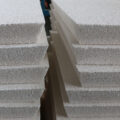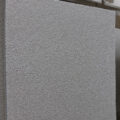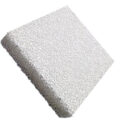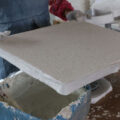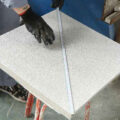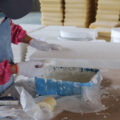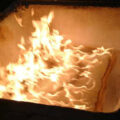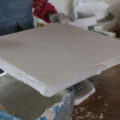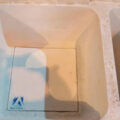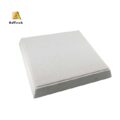The foam ceramic filter manufacturer immerses the foam material so that it covers the mesh and basically fills the voids therein. The impregnated material is then compressed to discharge about 80% of the slurry, and the balance is evenly distributed throughout the foam material, preferably, so that some pores are blocked in a uniformly distributed manner to increase the degree of tortuosity. The compression is released so that the web remains covered by the slurry and the material is dried. The dried material is then heated to first burn out the flexible organic foam, and then the ceramic coating is sintered to provide a molten ceramic foam having a plurality of interconnected voids surrounded by a bonded or molten ceramic mesh made of flexible foam.

Foam Ceramic Filter Manufacturer uses the following manufacturing method to make ceramic foam filter:
1. Provide mud
The solid and liquid in the slurry can be mixed with a high-efficiency mixer during the preparation of the slurry.
The slurry contains at least 70% solids and no more than 30% liquid, more preferably at least 75% solids and no more than 25% liquid. Even at least 80% solids and no more than 20% liquids. For example, the slurry may consist of 80% solids and 20% liquid.
2. Coating slurry
Cut organic foam (such as polyurethane foam) into pieces of a certain size or other desired shapes.
The organic foam can be pre-treated before coating. For example, the organic foam is heated or hydrolyzed to remove the blind film to ensure that the voids are not blocked and thus increase the porosity. Before slurry dipping, it is necessary to repeatedly extrude the organic foam to remove air, and then perform slurry dipping (coating).
Impregnation (coating) of the slurry can be carried out by atmospheric adsorption, vacuum adsorption, mechanical rolling or manual friction.
Slurry dipping (coating) is roll dipping (coating). For example, the formulated slurry is applied to the cut polyurethane foam sponge by rolling to form at least one refractory coating. The slurry impregnation can be performed once, twice or more times.
Preferably, the immersion of the slurry is repeated multiple times until the internal air is completely removed. The impregnated organic foam is extruded to remove the excess ceramic slurry to uniformly coat the slurry on the network structure of the foam, and the excess slurry is further extruded to form a green body.
3. Dry
The coated porous green body needs to be dried. It can be dried in a cool place, hot air, infrared rays or microwave.
4. Sintering
Preferably, the sintering temperature is 1000-1600°C, preferably 1050-1500°C, more preferably 1100-1450°C, such as 1300°C. Sintering is performed in an oxygen-containing atmosphere such as air. Sintering can usually be carried out in a kiln such as a shuttle kiln or a push kiln.

